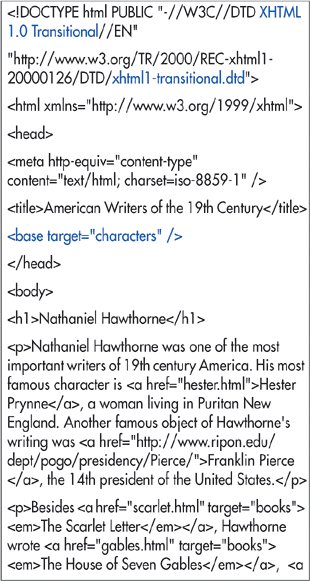Setting the Default Target
| A link, by default, opens in the same window or frame that contains the link. You can choose another target for each link individually, as described on page 108, or specify a default target for all the links on a page. Figure 6.14. Use the base tag to set the default target (in this case the characters window) in order to save typing. Notice that I no longer have to specify the target for the links in the first paragraph. This document is equivalent to the one shown in Figure 6.11. To set a default target for a page:
|
EAN: 2147483647
Pages: 340
- Getting Faster to Get Better Why You Need Both Lean and Six Sigma
- Seeing Services Through Your Customers Eyes-Becoming a customer-centered organization
- Success Story #2 Bank One Bigger… Now Better
- Executing Corporate Strategy with Lean Six Sigma
- Designing World-Class Services (Design for Lean Six Sigma)

 Tips
Tips